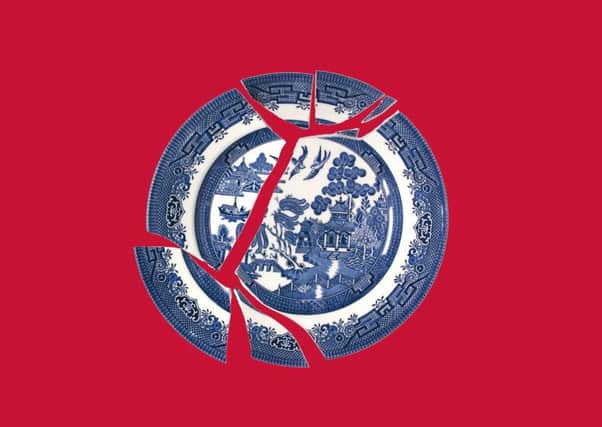David Moore: Scotland’s food and drink industry must break into China


The inexorable economic rise of Zhongguo – literally “the Middle Kingdom” – in “China’s century” is already very well documented. No news there. The country’s relative scale to Scotland is also well documented: there are now 15 Chinese cities with populations of more than ten million.
With a staggeringly(!) uncertain Brexit looming, and with it a threat to our huge reliance on the EU for food and drink exports, there is an imperative to look further overseas for new markets.
Advertisement
Hide AdAdvertisement
Hide AdThere are none bigger than China. Some of the stats are mind-blowing. In 2017 China imported £45 billion worth of food and drink products – more than ten times Scotland’s global export number – and up 26 per cent year-on-year.
There is now an emerging middle class of 400 million people in the country – and a 1,380 per cent growth in outbound tourism since the millennium, despite only 10 per cent of Chinese yet owning a passport.
Most remarkable of all is the growth in technology. No-one uses dirty cash in China any more. WeChat – the country’s combo of WhatsApp, ApplePay, LinkedIn in one platform – now counts one billion users. The Chinese are country miles ahead in e-commerce. They had “Sherpas” servicing Shanghai before I left in 2012 – years before anyone had heard the word “Deliveroo”.
China is now the number-one global market for drinks e-commerce – and four times the size of the US market.
Which is all well and good, but why would Scotland have the right or need to play, never mind the right to win, in China? The territory is difficult – notoriously difficult – to break into. Along with the biggest opportunities come the biggest barriers. I’ll give you five good reasons:
Global category leadership
In Scotch Whisky, we have the undisputed global-lead category in premium drinks. No-one comes near. I’m convinced that the market for single malt whisky in China – led by the big boys from Macallan, Singleton, Glenmorangie and Glenlivet – is now on the verge of an explosion.
China is still only world number 19 by volume. And we have at least 40 new single malt distillery brands on the way, with their own amazing stories from places all over Scotland, such as Clydeside, Holyrood, Ardnamurchan, Harris and Raasay.
Scotch comprises 82 per cent of our global exports and can form a huge “halo” for the rest of our larder. It’s our “ante” in the game.
Ambition
Advertisement
Hide AdAdvertisement
Hide AdScotland Food and Drink has set out welcome and hugely ambitious plans to take our total larder value from circa £15bn today to £30bn by 2030.
Exports will have to drive this, and, historically, we’re bloody good at it – the whisky baron dynasties of Walkers, Dewars and Chivas were sending Scotch down the Clyde to all over the world throughout the 19th century.
Provenance and Produce Scotland has impeccable credentials – the cleanest air, the finest water, incredible farmland. The Chinese mistrust of their own food table and environment is all pervasive. They want produce and brands with great stories and clean credentials. And they’re prepared to pay for them.
The Kiwis have told their “100% Pure New Zealand” story with their silver fern motif. We can do it too, and our produce suite –from the world’s finest seafood to Scotch Beef –is stronger.
It breaks my heart to see Australian “Aberdeen Angus” leading the market in China. When the market finally opens up, it doesn’t have to be that way.
Collaboration
We are small enough to collaborate, big enough to punch above our weight. Scotland Food and Drink has enabled great growth over the last decade, but we now need to kick on and drive hard from the private sector across all the categories.
Our tourism offering is second to none and can form that “virtuous circle” for our food and drink. I didn’t make this up. We are Rough Guide’s “most beautiful country in the world”. Official.
Technology
For a tiny place, we have the expertise and global ambition shown by businesses such as Skyscanner – which ironically is now owned by Beijing’s C-Trip –and Fanduel.
Advertisement
Hide AdAdvertisement
Hide AdWith smartphones and social media, barriers to scale to new consumers have broken down. Premium and luxury products are driven by stories. Consumers want and expect to know where their food and drink have come from. We have the technology to tell the story.
So what are we waiting for? It’s time for Scotland to invade the Middle Kingdom.
David Moore is a director of JW Filshill International and drinks retailer Flavourly.com. He is currently working on an online platform to power Scottish food and drink exports. No prizes for guessing which market will be his number-one priority.
This article first appeared in The Scotsman’s Food and Drink 2019 supplement. A digital version can be found here.